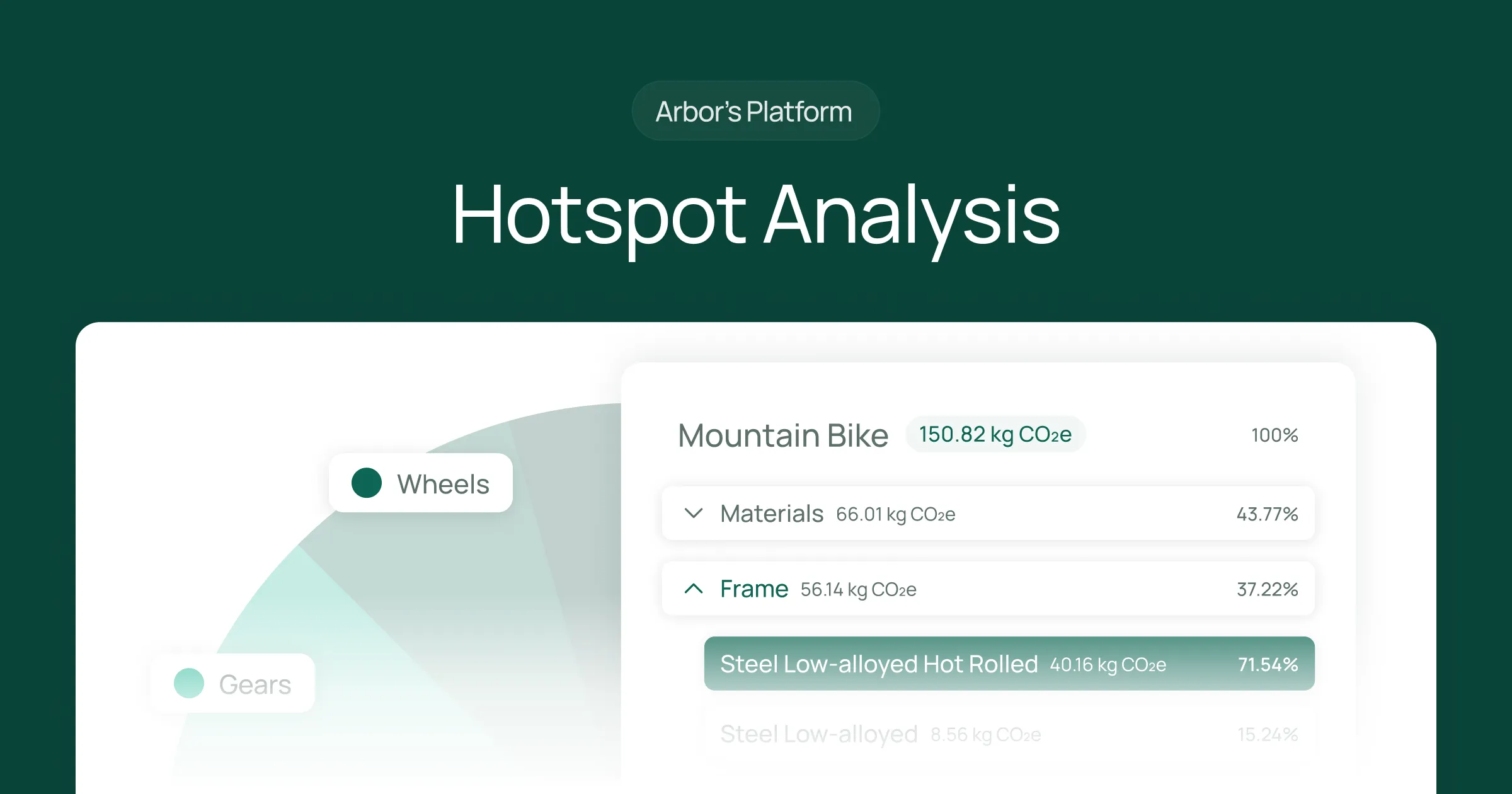- 2025 Update (v3): PCAF now includes new asset classes such as securitizations and undrawn loan commitments, and distinct standards for facilitated and insurance-associated emissions.
- Facilitated Emissions: Capital market activities (such as underwriting) are now weighted at 33% to distinguish them from direct financing.
- The 99% Rule: For most financial institutions, financed emissions (Scope 3) account for over 99% of their total carbon footprint, dwarfing operational emissions.
- Data Quality: PCAF uses a 1-5 scoring system (1 = verified data; 5 = estimates) to ensure transparency and drive data improvement.
- Strategic Value: Beyond compliance, PCAF helps institutions manage climate transition risk and align with major frameworks like SBTi, CDP, and CSRD.
The Guide to the Partnership for Carbon Accounting Financials (PCAF)
If you work in finance, the pressure is on. Regulatory expectations are evolving and climate accountability is gaining traction across global markets. Financial institutions are facing rising demands to quantify and report the emissions associated with their portfolios.
The Partnership for Carbon Accounting Financials (PCAF) has become the global standard for measuring these impacts. But keeping up with it is a job in itself.
With the December 2025 launch of the third edition (v3) of the Global Greenhouse Gas Accounting and Reporting Standard for the Financial Industry, the rules have expanded. We are talking new asset classes, stricter Scope 3 requirements, and entirely new categories like facilitated emissions.
This guide helps you make sense of it all. Whether you are a bank, an asset manager, or an insurer, understanding PCAF is the only way to effectively navigate climate risk and compliance today.
What is PCAF, and why does it exist?
The origin story

The Partnership for Carbon Accounting Financials (PCAF) is an industry-led initiative that helps financial institutions measure and disclose the greenhouse gas (GHG) emissions associated with the loans and investments they finance.
It started in 2019 because there was a massive blind spot in the sector. Despite the Paris Agreement, substantial capital continued to flow into fossil fuels.
In the six years after the adoption of the Paris agreement, banks invested $4.6 trillion into fossil fuels, often without a clear calculation of the carbon cost. PCAF was established to address this by creating a standardized approach to the calculations.
By measuring "financed emissions," institutions can finally see the climate risks sitting in their portfolios and align their money with global climate goals.
Who needs to use it?
PCAF applies to pretty much everyone in the financial sector. Banks, asset managers, insurance companies, pension funds.
If you deploy capital, this framework is worth a review. It is designed to scale, meaning it works just as well for a massive multinational bank as it does for a regional credit union.
The 2025 standard update (v3)
The standard is not static. As of December 2025, PCAF has rolled out significant updates to close loopholes and expand coverage. The standard is now organized into three distinct parts plus supplemental guidance.

Part A: Financed emissions (v3)
This is the core of the standard, covering the emissions associated with lending and investment portfolios (Scope 3, Category 15). The v3 update added four new asset classes, bringing the total to ten:
- Use of Proceeds Structures: This now includes green bonds and loans, where proceeds are ring-fenced for specific projects.
- Securitizations and Structured Products: A method to account for emissions in complex, pooled asset structures.
- Sub-sovereign Debt: This covers bonds and loans issued by public authorities at the subnational level, such as states, provinces, or cities.
- Undrawn Loan Commitments (optional): You can now report on funds committed but not yet drawn. This aligns with the requirements of IFRS S2.
This sits alongside existing classes, such as listed equity, business loans, mortgages, commercial real estate, and motor vehicle loans.
Additionally, the update includes guidance on Fluctuation Analysis to explain changes driven by market price volatility, and Inflation Adjustment to correct economic emission intensities over time.
Part B: Facilitated emissions
This is a big shift for capital markets. It covers the facilitation of debt and equity issuance. Think about underwriting stocks and bonds.
Here is the catch. To distinguish this from direct financing, institutions apply a 33% weighting factor to facilitated emissions. This acknowledges that while the facilitator helps move funds, it does not provide the capital itself.
These must be reported separately from financed emissions. Never mix them.
Part C: Insurance-associated emissions (v2)
This standard covers GHG emissions related to re/insurance underwriting. The 2025 update expanded this to include Project Insurance (all-risk policies for construction and erection) and Treaty Reinsurance. This allows reinsurers to properly account for emissions from ceded portfolios.
Supplemental guidance
You might also hear about "Avoided Emissions." PCAF now provides guidance on this. For example, financing a wind farm that replaces coal. However, these must be reported separately. You cannot use avoided emissions to "offset" your actual financed emissions in your inventory.
PCAF’s announcement that its standard will incorporate avoided emissions also reflects a broader shift in how the financial sector evaluates climate impact, not only accounting for the emissions a portfolio produces, but also the reductions it enables.
This is an area where Arbor has built deep experience. Our platform has helped companies model the long-term avoided emissions of their sustainability technology, enabling them to secure the financing needed to scale.
The methodology
How the math works
PCAF relies on a "follow the money" principle. The core idea is attribution. You determine your share of a company's total emissions based on your proportional financial stake.
For a simple example, if a bank provides 20% of a company’s total debt and equity, it accounts for 20% of that company’s emissions. This ensures fairness. You are responsible for the carbon emissions roughly equal to the influence and capital you provide.
The data quality score

Data is rarely perfect, and PCAF knows that. That is why they use a data quality scoring system from 1 to 5. It’s different per asset class, but generally follows the criteria below.
Institutions must disclose a weighted average data quality score. The goal is to move your portfolio from a Score 5 to a Score 1 over time.
Financed vs operational emissions
You might think, "We have office buildings and data centers, so we already track emissions." That is your Scope 1 and 2.
For financial institutions, Scope 3 (financed emissions) is the main event. These indirect emissions often dwarf operational footprints by a staggering amount.
A recent study found that reported emissions from financing activities were, on average, 700 times greater than direct emissions.
For many banks, financed emissions are over 99% of their total GHG inventory. If you are not measuring Scope 3, you are not measuring your footprint.
Strategic advantages beyond compliance
Implementing PCAF is not just about ticking a regulatory box. It is a strategic move.
Risk management
By measuring the emissions impact of your financing, you gain a clearer view of your exposure to climate risk. This affects asset valuation and regulatory scrutiny. In a world moving toward carbon pricing, knowing which parts of your portfolio are carbon-heavy is essential for resilience.
Transparency and trust
Arbor’s work with the Canadian Lenders Association (CLA) highlights that precise data builds trust. Transparency allows institutions to identify green investment opportunities and reduce financing risks. It fosters a culture of innovation that aligns with the Paris Agreement.
Alignment with other standards
One of the most common questions we get is how PCAF fits into the "alphabet soup" of other frameworks. The good news is that PCAF is designed to be interoperable.
Greenhouse Gas Protocol
PCAF supports the calculation approaches for Scope 3, Category 15.
SBTi (Science Based Targets initiative)
You need PCAF calculations to set valid science-based targets.
CDP (Carbon Disclosure Project)
PCAF methods align with CDP disclosure requirements, and recent collaborations have harmonized data quality scoring.
CSRD & ISSB
As regulations like the Corporate Sustainability Reporting Directive (CSRD) and ISSB standards demand Scope 3 disclosure, PCAF offers the accepted methodology to comply.
Getting started with PCAF
How to become a signatory
Joining the community is a structured process designed to build commitment.
- Familiarize yourself with the principles and methodologies to ensure they align with your capabilities.
- Commit by submitting a formal letter pledging to measure and disclose GHG emissions.
- Engage with a regional implementation team to learn from peers.
- Assess your portfolio by using the methodologies to calculate your financed emissions.
- Disclose your findings publicly.
Resources available
You are not doing this alone. Signatories get access to valuable tools.
- The PCAF Academy: Technical assistance and training.
- PCAF Database: A curated database of emission factors to help with those Score 4 and 5 calculations.
- Peer Learning: A network of banks and insurers facing the exact same challenges you are.
New compliance tools
To help with the 2025 updates, PCAF introduced a Disclosure Checklist. It is a voluntary tool that lets you check your draft disclosure against the standard’s requirements and submit it to the PCAF Secretariat for feedback.
It is not an audit, but it is a great way to ensure you have not missed anything before going public.
Summary
The 2025 deadline for the Scope 3 phase-in is here. For reports published from 2025 onwards, financial institutions must report Scope 3 emissions for all sectors within their financed portfolio.
The grace period is over.
PCAF is continuing to evolve. They are looking into derivatives, hedge funds, and green finance. By adopting these standards now, financial institutions position themselves not just as compliant entities but as leaders in the transition to a sustainable economy.
Looking for help with your carbon calculations?
Arbor works with financial institutions to turn complex supply chain and portfolio data into audit-grade carbon insights.
Measure your carbon emissions with Arbor
Simple, easy carbon accounting.

FAQ about PCAF
What is the deadline for reporting Scope 3 emissions under PCAF?
For reports published in 2025 and onwards, financial institutions must report Scope 3 emissions for all sectors within their financed portfolio. The previous phase-in periods have now concluded.
Can we group facilitated emissions with financed emissions under PCAF?
No, facilitated emissions (Part B) and financed emissions (Part A) must be reported separately. They represent different types of financial involvement and cannot be aggregated into a single number.
Does PCAF cover green bonds?
Yes, the v3 update includes a methodology for "Use of Proceeds" structures. This covers green bonds and loans where proceeds are ring-fenced for specific projects.
Is the PCAF’s Disclosure Checklist mandatory?
No, the Disclosure Checklist introduced in May 2025 is voluntary. However, it is strongly encouraged to validate your reporting against the standard requirements before publication.
How does PCAF handle inflation?
The 2025 update includes guidance on adjusting economic emission intensities for inflation. This ensures that financial metrics remain accurate over time despite economic fluctuations.



.webp)
%20Directive.webp)


.webp)











%20Arbor.avif)





%20Arbor.avif)


.avif)






%20Arbor%20Canada.avif)

.avif)
%20Arbor.avif)
.avif)






_.avif)
.avif)
%20Arbor.avif)




%20Software%20and%20Tools.avif)





.avif)
.avif)




%20EU%20Regulation.avif)












.avif)

%20Arbor.avif)









_%20_%20Carbon%20101.avif)







.avif)

.avif)
.avif)









